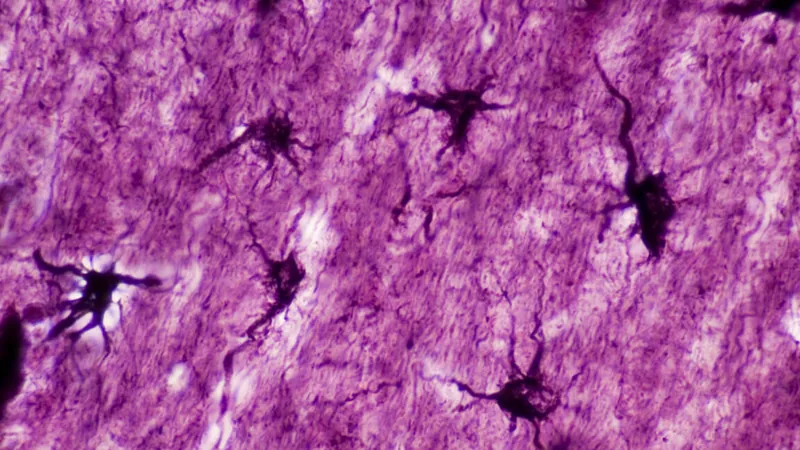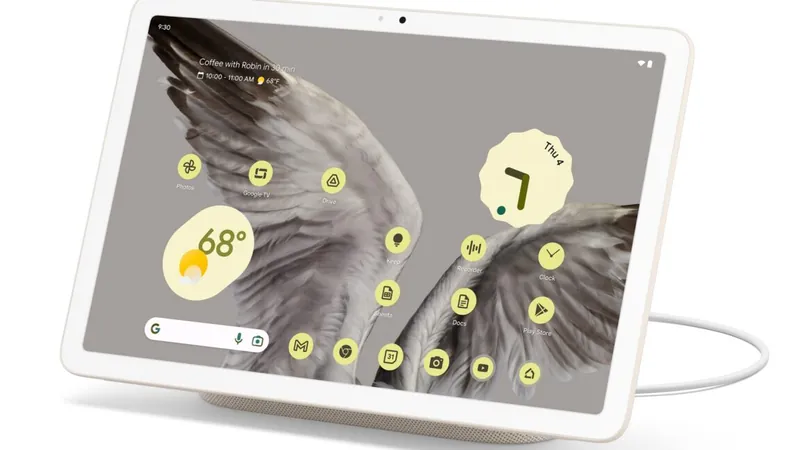
Unveiling Astrocytes: The Secret Key Players in Memory Formation and Recall
2024-11-23
Author: Ying
In a groundbreaking revelation in neuroscience, Baylor College of Medicine's researcher Michael R. Williamson emphasizes a major shift in our understanding of how memories are formed and stored in the brain. "If we go back to the early 1900s, this is when the idea was first proposed that memories are physically stored in some location within the brain," he explains. Historically, scientists believed that neurons, specifically the engrams—groups of neurons firing during learning events—were solely responsible for memory storage. However, the story has evolved dramatically.
Recent studies have illuminated the significant role of astrocytes—non-neuronal brain cells—in memory processes. Over the past two decades, researchers have come to understand that astrocytes actively participate in the brain's memory functions by both activating neurons and engaging in the intricate mechanisms of memory formation. Williamson’s lab has made the pivotal discovery that certain subsets of astrocytes are specifically involved in storing individual memories, suggesting that they are not just supporting players but rather active participants in memory management.
A New Era of Memory Manipulation?
One of the most exciting implications of this research is the potential to artificially manipulate astrocytes to suppress or enhance specific memories while leaving others intact. This concept could revolutionize our approach to treating memory-related disorders, allowing for targeted interventions without broad cognitive repercussions.
Preparation of Astrocytes for Memory Tracking
Astrocytes, visually distinctive for their star-like shape, perform various functions that support the health and performance of neighboring neurons. Williamson's team devised innovative techniques that marked selected groups of astrocytes. By observing when these cells activated specific genes—such as the c-Fos gene crucial for neuronal connection reconfiguration—they were able to identify which astrocytes were active during memory formation.
To observe this in action, the researchers employed a method called "fear conditioning," exposing mice to a new environment along with a series of mild electric shocks. This conditioning ensured that the mice would associate the unpleasant experience with the specific box. Through this investigation, they identified which astrocytes engaged during the formation of the fear memory.
Astrocytes and Neuron Communication: A Complex Dance
The intricate architecture of astrocytes allows them to interact with an impressive number of synapses—up to 100,000—making their role in memory even more intricate. Williamson notes that astrocytes formed significant connections with neurons involved in the same memory formation. By artificially stimulating the astrocytes, the team observed an increase in the activity of engram neurons without affecting nearby non-engram neurons.
An astonishing finding was that astrocytes involved in forming fear memories exhibited heightened levels of NFIA, a protein known to regulate memory circuits in the hippocampus.
The Power of Selective Forgetting
The researchers further examined the astrocytes' involvement in memory recall. Using targeted activation techniques, they found that stimulating astrocytes from the original memory formation could trigger a freeze response in mice, even when they were in a neutral environment. On the flip side, they tested whether disabling these specific astrocytes would erase a memory entirely. When NFIA was selectively deleted, the mice exhibited significantly diminished fear responses, indicating a foggy memory.
However, the memory was not completely erased. The mice retained some recognition of the conditioned environment, albeit with reduced clarity. This suggests that the memory remains intact at a neural level but is less accessible when astrocytes are impaired.
Revealing the Undo Button on Memories
Progressing from memory suppression, the researchers discovered that they could reactivate these "forgotten" memories by stimulating the relevant engram neurons directly. This reactivation allowed the mice to remember their fear conditioning once again, indicating that the memory was still present within the neural circuitry, yet obstructed by the deactivated astrocytes.
The research team envisions that these discoveries could lead to groundbreaking treatments for psychological disorders such as PTSD, by targeting the astrocytic mechanisms of memory processing. Williamson cautions that while they have identified a new cellular target, much remains to be explored. Future research will broaden the focus beyond the hippocampus, probing whether astrocytes maintain similar roles across various brain regions critical for memory.
In summary, the recent findings on astrocytes reveal a sophisticated layer of memory processing that challenges long-held beliefs and opens up myriad possibilities for future neuroscientific and therapeutic advances. Scientists are now standing at the precipice of understanding just what makes us remember—and what brings those memories back into focus.





 Brasil (PT)
Brasil (PT)
 Canada (EN)
Canada (EN)
 Chile (ES)
Chile (ES)
 España (ES)
España (ES)
 France (FR)
France (FR)
 Hong Kong (EN)
Hong Kong (EN)
 Italia (IT)
Italia (IT)
 日本 (JA)
日本 (JA)
 Magyarország (HU)
Magyarország (HU)
 Norge (NO)
Norge (NO)
 Polska (PL)
Polska (PL)
 Schweiz (DE)
Schweiz (DE)
 Singapore (EN)
Singapore (EN)
 Sverige (SV)
Sverige (SV)
 Suomi (FI)
Suomi (FI)
 Türkiye (TR)
Türkiye (TR)